|
V. THE TORBANISTS
|
|
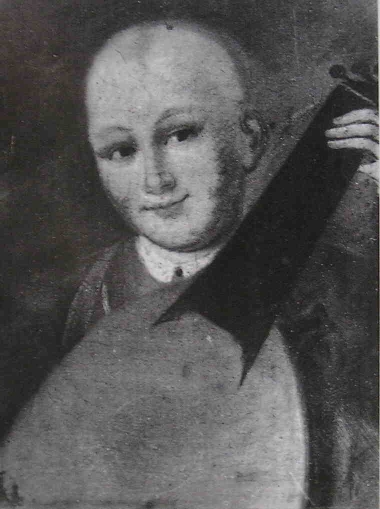 Ukrainian Cossack with a lute/gallichon, unknown artist (ca. 1750). Formerly in the palace in Podhorce (owned by Koniecpolski, Sobieski, Rzewuski and Sanguszko families) until 1939. Current whereabouts unknown.
Ukrainian Cossack with a lute/gallichon, unknown artist (ca. 1750). Formerly in the palace in Podhorce (owned by Koniecpolski, Sobieski, Rzewuski and Sanguszko families) until 1939. Current whereabouts unknown.
Torban is frequently mentioned in Russian and Ukrainian literature and memoirs from the 18th, 19th and the early 20th century. It is cited by Tolstoy, Kolcov, Saltykov-Schedrin, Bulgakov and innumerable others. Some evidence they offer is fascinating in the depiction of torban-song repertoire that was often indelicate if not simply scabrous.
Gorlenko: "There is a type of gentleman's bandura that is an attempt to combine the cobza with the guitar. It is not common among the folk, but exists as a remnant of old times."
Kistjakivsky: "Music was sent away, Torbanists remained to sing and dance."
Sovinsky: "Torban is still used here nowadays (1853)"
Voronov: "Torban is one the best instruments, much like the guitar, but with 25 or more stings...."
Rusov: "Many Kievans still remember Teorban, formerly used as often as guitar..."
Grigor'ev: "Russian Torbanists sang ancient romances, mostly sad ones, but sometimes those that are excessively joyful, with new and cynical words"
Dahl: "Torban is played with fingers, in the guitar fashion."
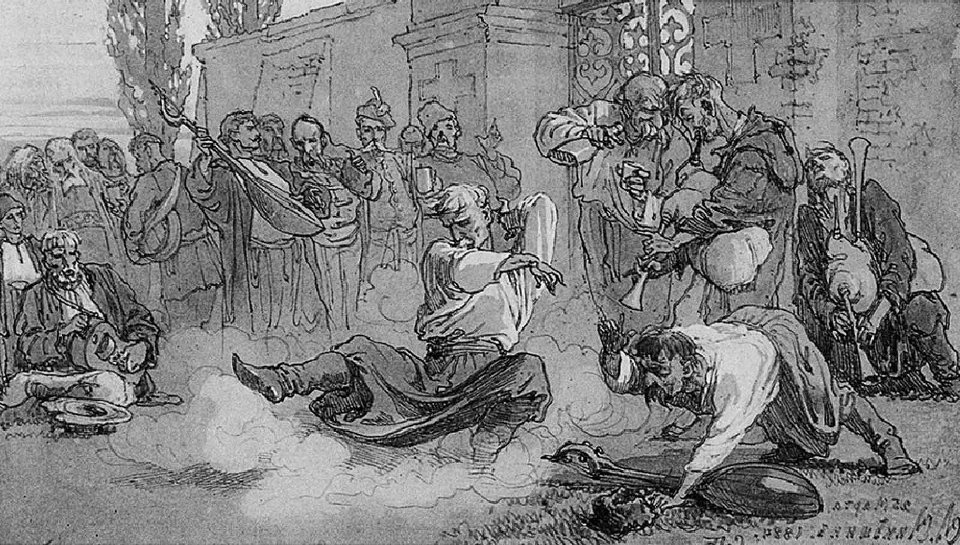
 The surnames TORBAN and TORBANIST
are not uncommon in the Western Ukraine, and, interestingly,
many bearers of these surnames are Jews as well as Ukrainians.
An 1843 guidebook to the city of Sestroretsk near Moscow mentions
that several local torbanists were baptized Jews from Ukraine
who came to the city as military conscripts.
The surnames TORBAN and TORBANIST
are not uncommon in the Western Ukraine, and, interestingly,
many bearers of these surnames are Jews as well as Ukrainians.
An 1843 guidebook to the city of Sestroretsk near Moscow mentions
that several local torbanists were baptized Jews from Ukraine
who came to the city as military conscripts.
The first alleged "torbanist" of record:
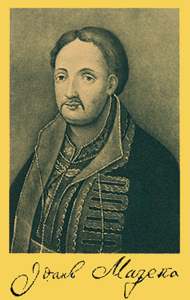 Hetman
Ivan Mazepa, who has spent his youth at the Polish royal court,
learned to play "torban" there. He remained dedicated
to his instrument throughout all his life in Ukraine as well
as in exile. The instrument that is believed to have belonged
to Mazepa , and that was formerly in the collection of Tarnawsky
Museum in Chernigov is in fact not a torban, but a swan-neck
Baroque-Lute of "Hoffmann" type. Current whereabouts
of this lute are unknown, but its photographs have been reproduced
in many books on Ukrainian music. Mazepa was a true intellectual,
educated in Italy and Germany, in command of Polish, Russian,
Latin, Italian and German, a collector of incunabula and art,
a maecenate, bon-vivant and womanizer, a (living) legend even
before becoming one.
Hetman
Ivan Mazepa, who has spent his youth at the Polish royal court,
learned to play "torban" there. He remained dedicated
to his instrument throughout all his life in Ukraine as well
as in exile. The instrument that is believed to have belonged
to Mazepa , and that was formerly in the collection of Tarnawsky
Museum in Chernigov is in fact not a torban, but a swan-neck
Baroque-Lute of "Hoffmann" type. Current whereabouts
of this lute are unknown, but its photographs have been reproduced
in many books on Ukrainian music. Mazepa was a true intellectual,
educated in Italy and Germany, in command of Polish, Russian,
Latin, Italian and German, a collector of incunabula and art,
a maecenate, bon-vivant and womanizer, a (living) legend even
before becoming one.
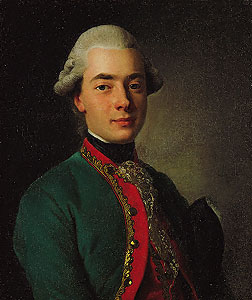 Count Oleksij/Alexei Rozumovsky, in
fact, being a Cossack and a commoner, was originally a "Pandorist"
and a singer [post-1731] at the court Capella of the Empress
Elisabeth Petrovna. He acquired his title and position by his
skill in singing to his own "torban" accompaniment
[some dispute that, stating that the accompanying "torban"
was actually played by his brother Kyrylo Rozumovsky, who studied
at Goettingen and Koenigsberg universities]. He eventually became
Empress' lover. This was an unusually genuine loveaffair, and
the Empress secretly married Rozumovsky in 1742. Their progeny
was forbidden to marry by the Tsars that followed, so they could
produce only illegitimate children: a measure to prevent them
from ever becoming pretenders to the Russian throne.
Count Oleksij/Alexei Rozumovsky, in
fact, being a Cossack and a commoner, was originally a "Pandorist"
and a singer [post-1731] at the court Capella of the Empress
Elisabeth Petrovna. He acquired his title and position by his
skill in singing to his own "torban" accompaniment
[some dispute that, stating that the accompanying "torban"
was actually played by his brother Kyrylo Rozumovsky, who studied
at Goettingen and Koenigsberg universities]. He eventually became
Empress' lover. This was an unusually genuine loveaffair, and
the Empress secretly married Rozumovsky in 1742. Their progeny
was forbidden to marry by the Tsars that followed, so they could
produce only illegitimate children: a measure to prevent them
from ever becoming pretenders to the Russian throne.
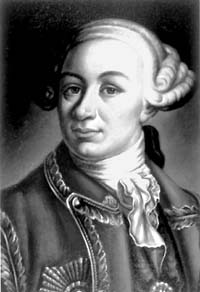 Kyrylo was elected the last Hetman
of Ukraine and became the first President of the Academy of Sciences
of the Russian Empire. There is some possibility that he received
tuition on the Lute from Belogradsky in Koenigsberg and St.Petersburg.
He eventually fell out of
favor for trying to protect eroding rights of the Ukrainians
and spent the rest of his life at his country villa in his native
village of Baturin.
Kyrylo was elected the last Hetman
of Ukraine and became the first President of the Academy of Sciences
of the Russian Empire. There is some possibility that he received
tuition on the Lute from Belogradsky in Koenigsberg and St.Petersburg.
He eventually fell out of
favor for trying to protect eroding rights of the Ukrainians
and spent the rest of his life at his country villa in his native
village of Baturin.
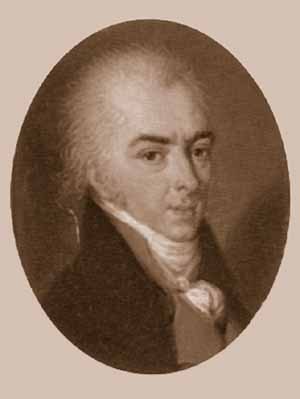 Alexei, son of Kyrill.
Alexei, son of Kyrill.
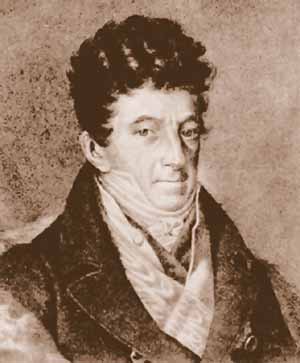 The Count's grandson, Andrey/Andriy,
[1752-1836] became the Russian Ambassador to the Austro-Hungarian
Court in Vienna from 1790. There he also became one of Beethoven's
close friends and converted to Catholicism. In honor of this
association, Beethoven incorporated some Ukrainian melodies,
which would have been traditionally played on torbans, into a
number of his chamber works, notably the "Razumovsky"
quartets. Andriy had 3 torbans in his collection. One of them
is still
preserved in
Vienna.
The Count's grandson, Andrey/Andriy,
[1752-1836] became the Russian Ambassador to the Austro-Hungarian
Court in Vienna from 1790. There he also became one of Beethoven's
close friends and converted to Catholicism. In honor of this
association, Beethoven incorporated some Ukrainian melodies,
which would have been traditionally played on torbans, into a
number of his chamber works, notably the "Razumovsky"
quartets. Andriy had 3 torbans in his collection. One of them
is still
preserved in
Vienna.
Grygorij Skovoroda, an influential poet-composer, writer and philosopher is reported to have played cobza and torban. He made a living as a teacher of music and Latin, and several of his songs have been sufficiently valued to have passed into the relam of folk-music (See the CD recording of Taras Kompanichenko).
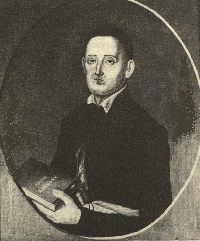
A polish edition of "Zabawy Przyemnne" (1769-1777) state that "kozak na teorbanie tnie tanczyki", and a catalogue of a cultural festival in Warsaw in 1888 says that "in the olden days all torbanists in Poland were from Ukraine".
The 19th century torbanists of note of whom there are accounts extant were:
Semen Chaplya (?-1855) of Lebedin.
Ivan Koshovy, of Poltava, also known as a singer and a dancer. Originally a serf, he was granted freedom for his artistry.
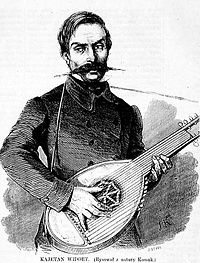 Kajetan Widort, father of Franz Vidort, who was the third generation
torbanist in his family, founded by Gregor Vidort who came to
Ukraine from Austia in late 1700's. He was in the service of
count Rzevucky, who had huge land holdings in Ukraine. Rzevucki,
an adventurer, an excentric and a spendthrift, famous for the
introduction of arabian horses into Europe, established a torbanist
school peopled by his serfs. He is known to have composed many
melodies for the Ukrainian "duma" texts written by
his literary assistants, Komarnicki and Padura. Many of these
were a part of Vidort's repertoire, and one of them "The
duma of Karmelyuk" became a true folk song. There was a
considerable craze for all things Ukrainian among Russian and
Polish nobility, often to the point of "Ukrophilia".
Count Rzevucki at one point changed his name to hetman Revuha
and publicly dressed in Ukrainian attire. Franz Vidort accompanied
the Count on a long tournee of Europe. His account of it states
that he "saw no torbans anywhere, except in Italy, where
I saw a mandoline [sic!] set up similarly".
Kajetan Widort, father of Franz Vidort, who was the third generation
torbanist in his family, founded by Gregor Vidort who came to
Ukraine from Austia in late 1700's. He was in the service of
count Rzevucky, who had huge land holdings in Ukraine. Rzevucki,
an adventurer, an excentric and a spendthrift, famous for the
introduction of arabian horses into Europe, established a torbanist
school peopled by his serfs. He is known to have composed many
melodies for the Ukrainian "duma" texts written by
his literary assistants, Komarnicki and Padura. Many of these
were a part of Vidort's repertoire, and one of them "The
duma of Karmelyuk" became a true folk song. There was a
considerable craze for all things Ukrainian among Russian and
Polish nobility, often to the point of "Ukrophilia".
Count Rzevucki at one point changed his name to hetman Revuha
and publicly dressed in Ukrainian attire. Franz Vidort accompanied
the Count on a long tournee of Europe. His account of it states
that he "saw no torbans anywhere, except in Italy, where
I saw a mandoline [sic!] set up similarly".
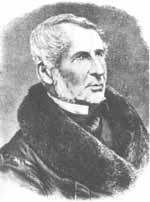 Tomasz Padura was an
important Polish romantic poet, who was born and lived in Ukraine.
He wrote a great deal in Ukrainian, both in and out of his
collaborations with Rzewucki. He shared the "Ukrainian affliction"
of Rzewucki, and similarly presented himself as a Ukrainian "Tymko
Padurra". His activities as a TORBANIST are documented, as
he was a performer of Padura/Rzewucki songs, but there was no
evidence that he ever composed like Rzewucki until very recently, when his manuscripts and editions of his songs were discovered in the National Library in Warsaw. Padura was a considerable
mythopoeist, and his literary and historical ideas were quite
influential in the nascent Ukrainian national self-determinist
movement. Padura was personally and politically close to Russian
Decembrists and the Cyrill & Methodius Society, and was a
life-long suspect in being a subversive, but he seems to have
avoided serious persecution, unlike Rzewucki who disappeared
and is presumed killed diring one of Polish uprisings in 1848.
Tomasz Padura was an
important Polish romantic poet, who was born and lived in Ukraine.
He wrote a great deal in Ukrainian, both in and out of his
collaborations with Rzewucki. He shared the "Ukrainian affliction"
of Rzewucki, and similarly presented himself as a Ukrainian "Tymko
Padurra". His activities as a TORBANIST are documented, as
he was a performer of Padura/Rzewucki songs, but there was no
evidence that he ever composed like Rzewucki until very recently, when his manuscripts and editions of his songs were discovered in the National Library in Warsaw. Padura was a considerable
mythopoeist, and his literary and historical ideas were quite
influential in the nascent Ukrainian national self-determinist
movement. Padura was personally and politically close to Russian
Decembrists and the Cyrill & Methodius Society, and was a
life-long suspect in being a subversive, but he seems to have
avoided serious persecution, unlike Rzewucki who disappeared
and is presumed killed diring one of Polish uprisings in 1848.
Another Polish poet from the "Ukrainan school" Joseph-Bogdan Zalesski occasionally referred to "my teorban" in his poems, but there is no other evidence of his musical activities.
Cajetan Vidort, son of Gregor and father of Franz, was in the service of count Roman Sanguszko, Polish patriot and an enlightened nobleman eventually sent into internal exile in Siberia. All of them primarily composed songs with torban accompaniment, with the exception of Franz, who was known primarily as a performer of his father's and grandfather's songs. It is recorded that Gregor Vidort had a student, Onufriy Vorozhb'yuk, who suffered the fate of many a Russian subject with a wrong political bent, he also went into internal exile/forced labor in Nerchinsk Mines in Siberia, never to return.
 Polish classic poet Maria Konopnicka
(2nd half of the 19th Century) often referred to "my teorban"
in her poems, but no other information on her as a musician came
to light to date.
Polish classic poet Maria Konopnicka
(2nd half of the 19th Century) often referred to "my teorban"
in her poems, but no other information on her as a musician came
to light to date.
One of the penultimate virtuosi on the TORBAN was Ivan Aleksandrov. Here is a photo of him with the instrument. He learned to play torban from a Jewish soldier from Poland stationed in Moscow. The point of contention with respect to TORBAN is whether it's mode of playing was "lute grip" or "psaltery grip". The photos below provide examples of both, while 1892 Lysenko article on Torban states unequivocally that it was played in the "lute" fashion, and Hotkevych who was familiar with the Aleksandrov photo calls it atypical and unnatural.
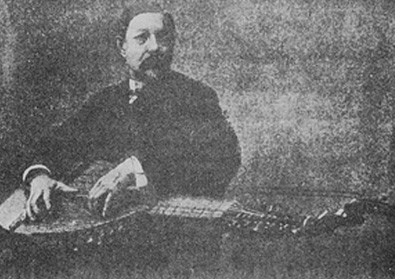
An unknown torbanist (last quarter of the 19th century)
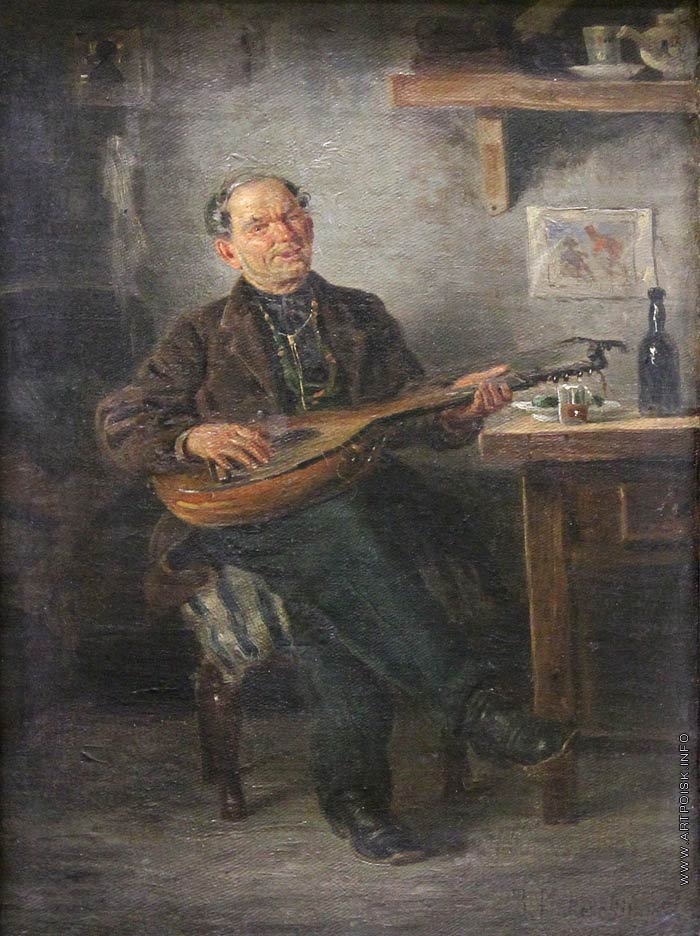
An unknown torbanist (last quarter of the 19th century)
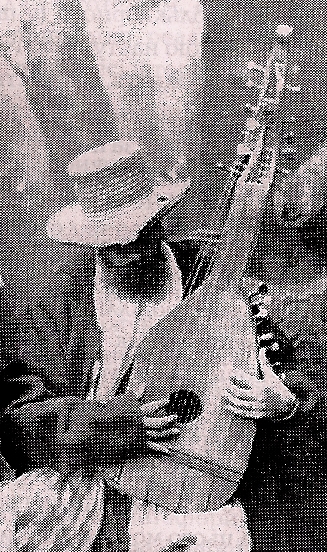
Oleksandr Boroday (last quarter of the 19th century) posing with the Lavra torban.
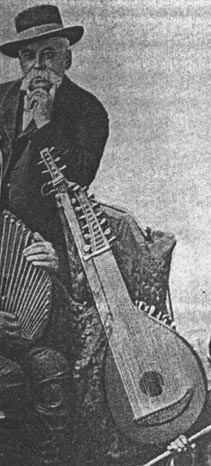
< BACK

 CHAPTER I
CHAPTER I